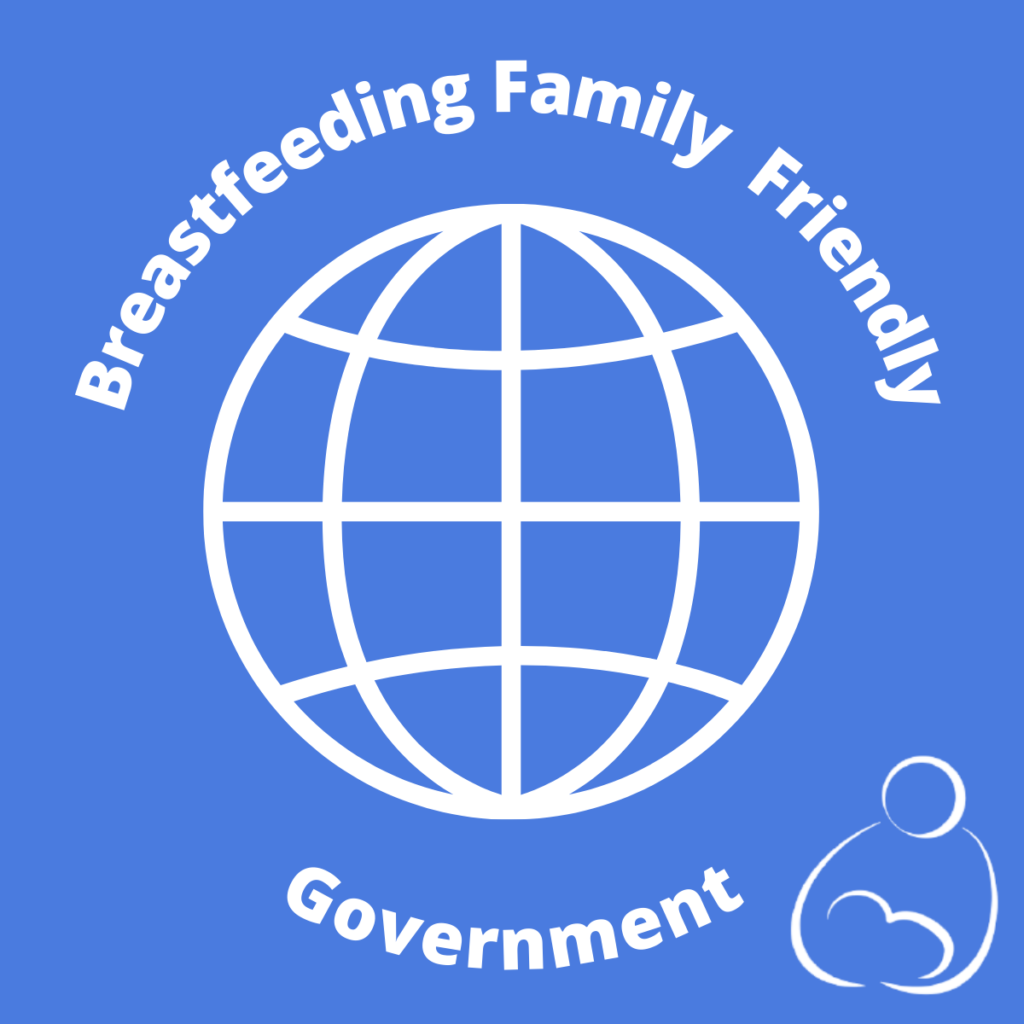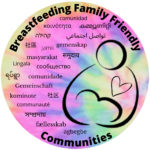Step 1. The community’s elected or appointed leadership has a written statement supporting breastfeeding that is routinely communicated to all.
Step 2. The community as a whole provides a welcoming atmosphere to chest/breastfeeding families.
Ten Steps to a Breastfeeding Family Friendly Community
Many advocates begin the Ten Steps to a Breastfeeding Family Friendly Community journey with their local government. The written support of local elected and/or appointed leadership can have a wide-reaching impact on the whole community. The government also contributes to the welcoming environment by providing comfortable spaces for nursing families, such as benches and other comfortable seating in its public areas, and posting “breastfeeding welcome” signs in public buildings to alert all that the the community welcomes and supports nursing families. Economic development councils/committees support businesses and organizations with information, resources, and recognition.
Getting Started
Health equity is the cornerstone of the Breastfeeding Family Friendly Communities initiative. Breastfeeding supports optimal growth and development. It meets nutritional needs and provides immunological benefits that reduce the risk of respiratory illnesses, ear infections, gastrointestinal illnesses, Sudden Infant Death Syndrome, and much more, and these benefits continue as long as the child is nursing. Yet, racial and ethnic minority and marginalized families in our communities face great health disparities. These health disparities extend to the lactation support that families need to initiate chest/breastfeeding and to continue to nurse for as long as desired. Breastfeeding Family Friendly Community (BFFC) implementation teams work to ensure that families receive lactation education and resources that are equitable, accessible, culturally-appropriate, and free from the marketing influence of manufacturers of breast-milk substitutes. BFFC teams also work to address the community structures that put breastfeeding, chestfeeding, and human milk feeding out of reach for families. BFFC supports families to be informed about the importance of chest/breastfeeding and human milk feeding and to be able to safely breastfeed/chestfeed in the many places and spaces that families shop, work, play, dine, relax, and interact with others in the community.
As you bring together stakeholders, look to community members who represent the diverse backgrounds of families in your community. Some of these community members already may be active in your local government or community organizations and can work with you to establish an equitable foundation for your initiative. It is important that your government’s leadership creates written statements with an equity lens to foster a welcoming and safe community for nursing families. Learn more about how to build a BFFC Community...
Understanding Your Local Government
The community’s elected or appointed leadership has a written statement supporting breastfeeding that is routinely communicated to all. (Step 1)
Written proclamations and policies are created by the local government as an integral part of the government’s strategy to guide decision making. Step 1 calls for a “written statement” because a written statement holds the government accountable to the community and provides the entire community with a clear understanding of the government’s position.
A breastfeeding friendly policy proclamation is an official written announcement by your local government to publicly recognize chest/breastfeeding as a vital part of the fabric of the community. This statement is shared or communicated on the government’s website or through social media or other public platforms. Learn more about how to get your local community proclaimed…
Beyond proclamations, good written policies provide greater insight on what your local government believes is important; clarify obligations and their purpose; and are consistent to last beyond the term of a particular government leader. How to write a “Breastfeeding Friendly” Policy…
Welcoming Families
The community as a whole must provide a welcoming atmosphere for breastfeeding, chestfeeding, and human milk feeding families. (Step 2)
This step, Step 2, builds on State laws that state that chest/breastfeeding may be carried out wherever a parent is lawfully allowed to be. Why does this matter? To establish and maintain an adequate milk supply, it is important that infants are fed on cue and frequently, day and night. Parents may know this; however, when the community does not provide a welcoming environment, finding a safe place to nurse in the community can be a challenge for families. Chest/breastfeeding must not be relegated to places where adults would not consume food, such as toilet areas, yet, without community support, that may be the place where parents feel that they need to nurse.
Displaying Signage
Knowing that all fifty states, the District of Columbia, Puerto Rico and the Virgin Islands allow breastfeeding “in any public or private location” may not be enough for families to feel comfortable nursing in the community.

“Breastfeeding Welcome Here” signage throughout the community provides much-needed reassurance for families! Imagine how welcomed a nursing family will feel when signage is posted next to the welcome signs to the city or in similar prominent positions (e.g., city operated parks, swimming pools, community centers, health departments); a “Breastfeeding Welcome Here” seal/logo is posted on government websites and/or social media or similar; businesses display welcoming clings on their doors; and/or flyers are available at the visitor’s bureau. Learn more about how to Welcome Families…
The USDA Breastfed Babies Welcome Here resource also contains communication tools Child and Adult Care Food Program (CACFP) operators can use to let mothers and families know that breastfed babies are welcome at their child care site. It includes a mother’s guide, 11″x17″ poster, and a message graphic.
Supporting First Responders
Signage is welcoming and reassuring; however, there probably won’t be signage in every corner of the community. What additional action can your community take to ensure that parents are not asked to stop feeding their children or to move to another location?
Reach out to first responders and all support staff to ensure that they understand and provide chest/breastfeeding protection to families in the community. How to inform local First Responders…
